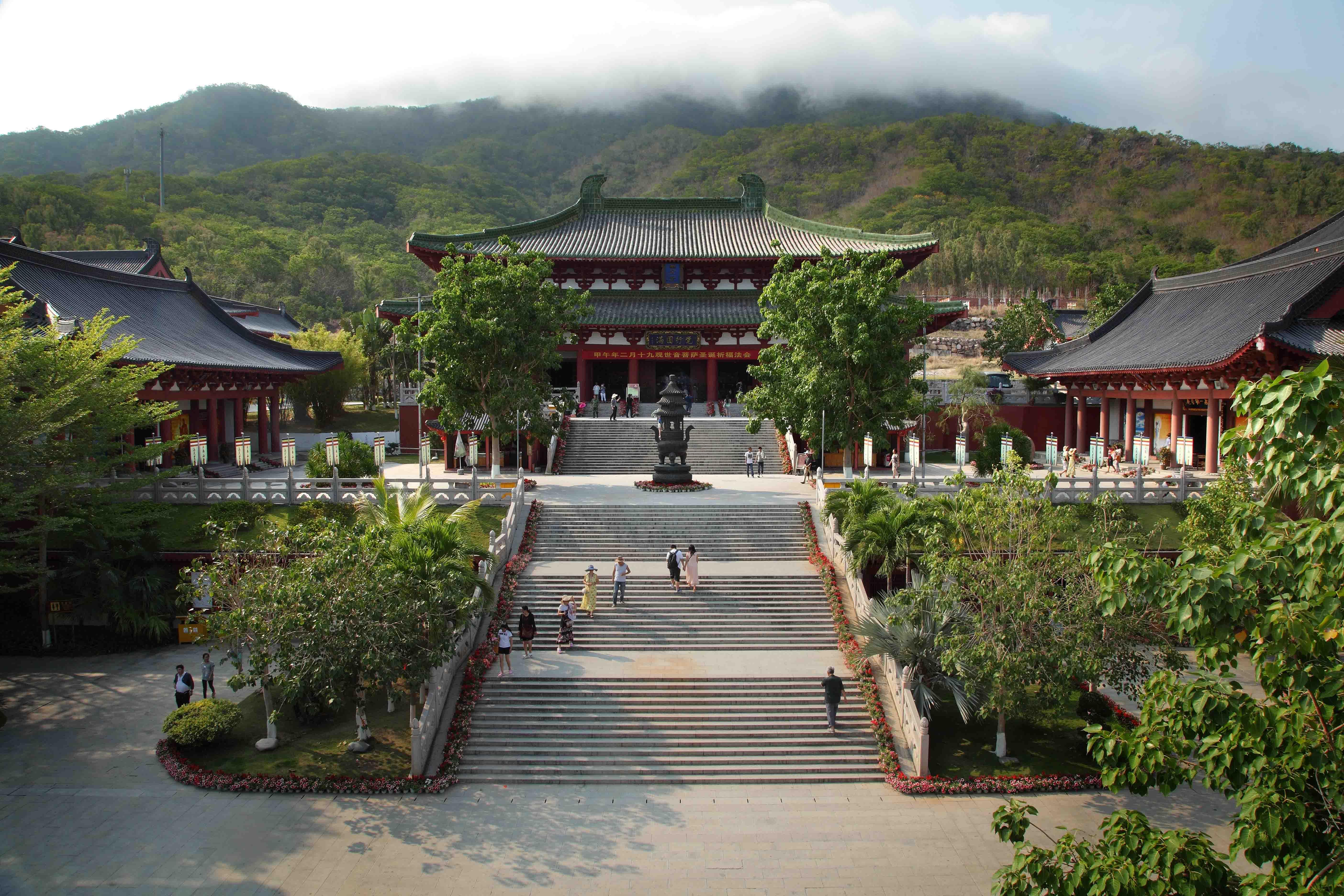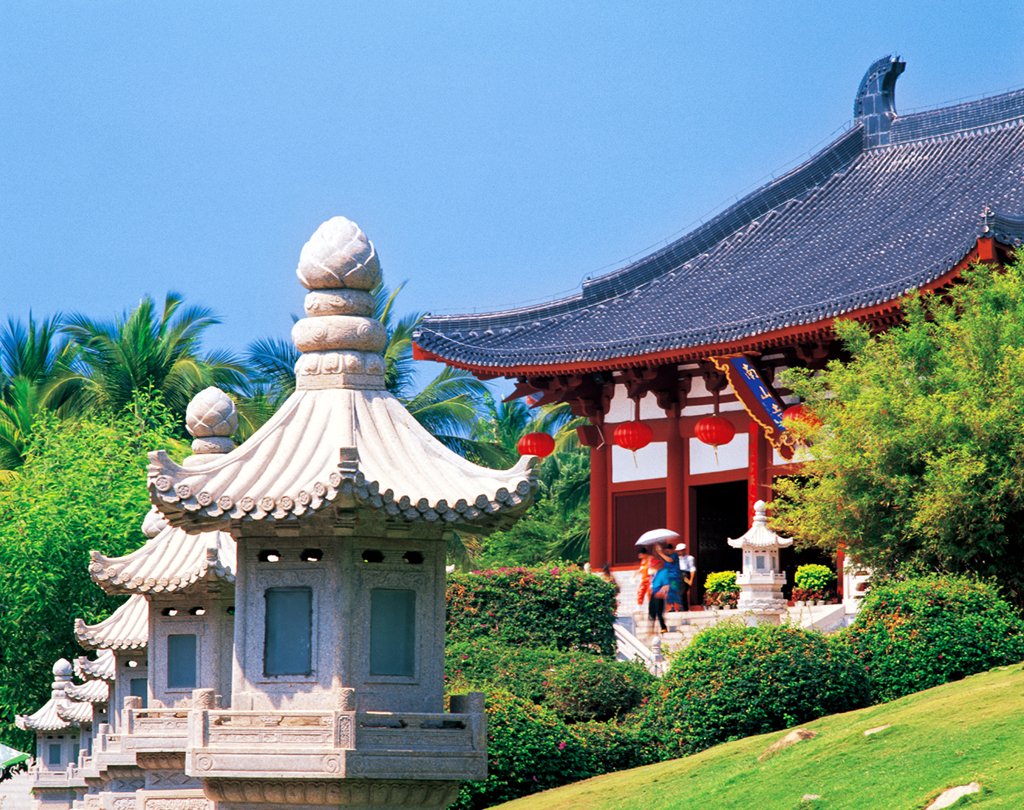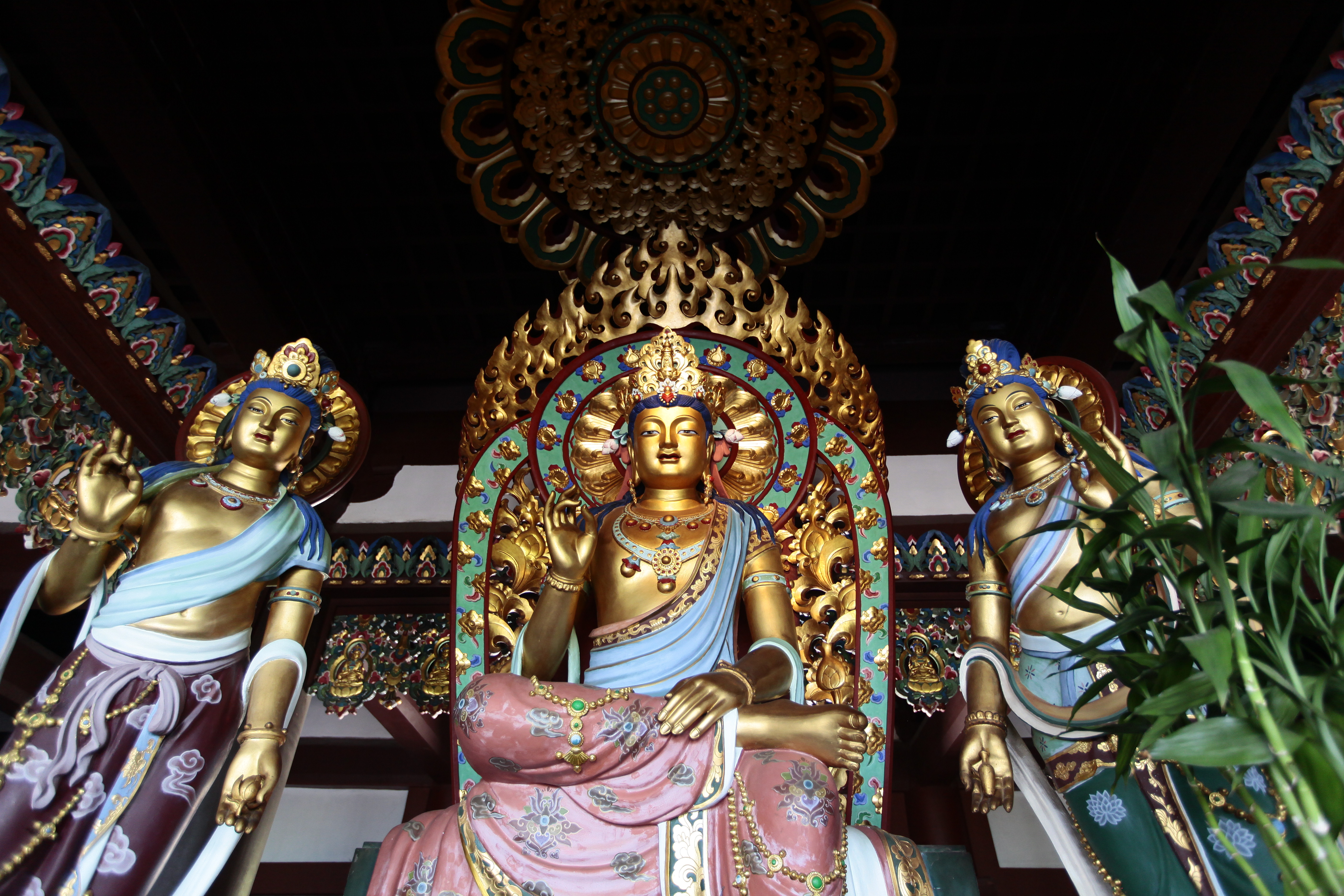Situated in Nanshan Cultural Tourism Zone, Sanya, facing the sea, Nanshan Temple is a large temple that imitates the architectural style of the floushing Tang Dynasty. Its location is chosen by the late president of the Buddhist Association of China, Zhao puchu. Approved by the State Administration for Religious Affairs, the construction was initiated on 11th, November, 1995 and completed on 12th, April, 1998. After its completion, Zhao puchu himself wrote the inscriptions “Nanshan Temple” and “Haitian Woods” (“Haitian” refers to the sight of the sea lining with the sky when seen from far away). Up to now, the temple consists of a group of buildings with architectural style of Tang dynasty, mainly including Renwang Hall, Hall of heavenly king, Bell Tower, Reel Buddhist Texts Shelf, the East and West Climbing Corridor, the East and West Side Hall and the Golden Hall, covering 5,500 square meters totally.

Nanshan Temple is a triplex building, made up of three connected halls among which Renwang Hall ranks the first, equivalent to “Sanmon Hall” in most temples. Two Buddhist protectors Guhyapãda vajrah and Naroyan King Kong are worshiped in this hall and they are regarded as guardians of the temple. According to the Buddhist book Ren Wang Huoguo Prajna Paramita, the two King Kongs were elevated as Renwang (kind kings) thanks to their protection to Budda Dharma. So the hall in Nanshan Temple is called Renwang Hall instead of “Sanmon Hall”

Tusita Inner Court is the second hall. Tusita, a name regarded as “world’s name” or “heavenly name”, which is translated as “satisfaction” or its other synonyms, is used to designate the place of desires. According to Buddhism, it is the 4th level among all six levels of “the world of desires”, divided into two courts: the internal one and the external one. The internal court is the pure land of Maitreya; while the other is the place for joys. Seven figures of Buddha are enshrined in this court, with the main Buddha Tianguan Maitreya in the center, being served by two other buddhas on the both sides, Damiaoxiang Bodhisattva on the left and Fayuanlin on the right, and protected by four Heavenly Kings around.

The main hall of Nanshan Temple is called Golden Hall. Three major statues are worshiped here, representing Transverse Buddhas (Buddhas in three different worlds). The Buddha in the middle is Sahã-lokadhãtu, the founder of Buddhism in the real world, Sakya-muni, with the left retinue Manjushri and the righy retinue Samantabhadra on both sides. The main Buddha on the left is Bhaisajyaguru with three Buddha statues at his backlight, symbolizing that the founder of eastern Sansheng jiao. On his left sits the retinue Surya-prabha and on his right sits the retinue Candraprabha. Bhaisajyaguru made 12 vows in the past including satisfying people’s all wishes, eradicating all sufferings of humans and helping with their liberation. The Buddha on the right is Amitabha, the founder of the Western Paradise. There are also three statues in his backlight, symbolizing that his is the founder of the Western Sansheng Jiao. On his left sits the retinue Guanyin (Arya Avalokiteshvara) and on his right sits the retinue Mahasthamaprapta. The Western Paradise is the dreaming place Buddhists are so eager to live in. On the both sides of Golden Hall sit 16 Arhats, called the 16 Nagasenas then; they are the earliest Arhats according to Chinese legends.


